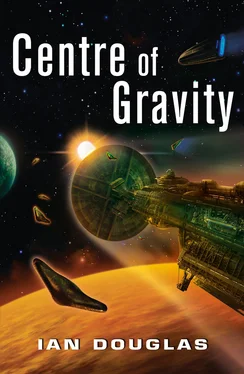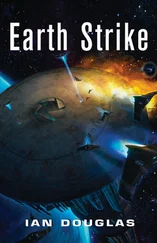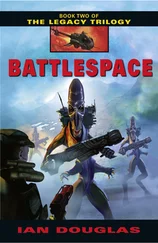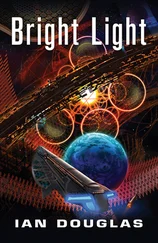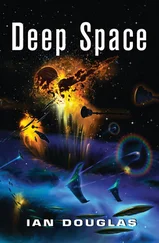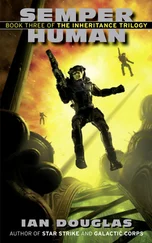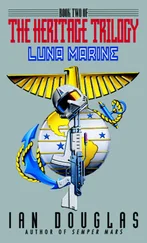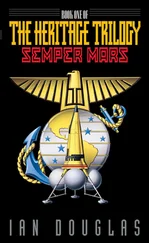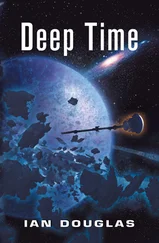If more distant Turusch warships were positioned far enough from Alchameth that they could have observed the emergence flash of the probe on the far side of Arcturus, there was no sign … though he was picking information out of light that had left Arcturus Station less than an hour after his entry into the system. A warning might well be on its way to those docked warships from sentries more than a light hour away.
Long minutes crawled past. The probe was hurtling toward the enemy vessels out of the glare of the local star, invisible … but before long the Turusch sensors would detect the distortions in space caused by the probe’s enormous AGM, its artificial gravitational mass. For a time, Alan considered the possibility that they simply weren’t looking in his direction, that he was not going to be noticed at all … and then the smaller warships alongside Arcturus Station began accelerating. Moments later, a cloud of missiles streaked in his direction. Alan began shifting the singularity drive randomly in different directions, causing the speeding probe to jink unpredictably. The time lag between his position and theirs gave him an advantage, time to calculate incoming trajectories and arrange not to be at their endpoints when the missiles detonated.
Alan’s recon pod was unarmed.
He increased acceleration, tacking additional nines onto his current percent c . Anti-ship missiles closed with him, and for a few moments Alan engaged in a deadly game of tag, jinking hard this way and that to confuse enemy missiles and defense systems. A nuclear fireball flared to port, dazzling and intense, the hard radiation sleeting across his screens.
Alan survived.
The gas giant Alchameth showed a disk, now, swelling rapidly as Alan’s sensors continued correcting for the speed distortion, becoming a vast, ringed and banded gas giant almost directly ahead. Alan focused on Jasper, visible now, high and to one side. A final course correction put him squarely on target. At 99.99% c , he flashed through the final 10 million kilometers in just 4.8 seconds subjective, passing Arcturus Station at a distance of just 315 kilometers.
He was prepared for the passage, with certain sensor collection heads extruded through the nano-liquid outer hull of the probe, trained on the enemy-held base, on the surface of the planet-sized moon, and on a large volume of surrounding space.
There was something else there … something just emerging now, not from behind Alchameth, but from within the gas giant’s seething, turbulent atmosphere, something unseen until this moment. Something huge …
High-energy beams lanced toward him as he passed, one grazing his screens and melting a portion of his hull.
And then he was past, speeding outbound at just less than the speed of light itself, as enemy ships and missiles scrambled to pursue.
But they needed to accelerate first, and would never be able to catch him.
Alan was injured, however; the grazing near-miss had burned out critical sensors, parts of his lateral maneuvering projectors, and his energy screen itself. That last was serious, because it meant that incoming radiation would fry his circuitry within the next few subjective hours.
Somehow, though, he needed to get the accumulated data from his near-passage of the station back to Earth.
And he was going to need to commit the AI equivalent of suicide to do so. …
21 December 2404
TC/USNA CVS America
Approaching SupraQuito Fleet Base
Earth Synchorbit, Sol System
1235 hours, TFT
The star carrier approached the gossamer structure with a delicate grace that belied the vessel’s titanic mass. Her hemispherical forward shield, pitted and scarred by innumerable impacts with dust motes and radiation, bore her name in sandblasted letters ten meters high: America .
Mushroom-shaped, the ship was 1,150 meters long. The forward cap, 500 meters across and 150 deep, served as both radiation shielding and as holding tank for 27 billion liters of water, reaction mass for the ship’s maneuvering thrusters. The slender kilometer-long spine was taken up primarily by quantum-field power plants, maneuvering thrusters, and stores; twin counter-rotating hab rings tucked in just behind the shield cap carried the ship’s crew of nearly five thousand. Around her, escorting vessels paced themselves to their ponderous consort’s deceleration, minnows in the shadow of a whale.
Thirty-six thousand kilometers ahead, Earth gleamed at half phase—with dawn breaking across eastern North America, while the Atlantic, Europe, and Africa lay in full light between swirls and shreds of brilliant white cloud. At this distance, the planet spread across just 20 degrees of arc pole to pole, appearing delicate and impossibly fragile.
More fragile still, though, was the web of orbital structures just ahead in America ’s path. SupraQuito hung suspended on the slender tether of its elevator cable in synch-orbit, directly above Earth’s equator some 35,783 kilometers above the top of the mountain to which it was anchored. The structure—or interconnected series of structures, actually—was an enormous collection of hab modules, shipyards, orbital factories, environmental facilities, power plants and collectors, agro spheres, and docking facilities suspended between the elevator dropping to Earth, and the support tether leading up to the anchor some thirty thousand kilometers farther out.
From here, SupraQuito—including the tangle of structures that housed the Earth Confederation government—was visible, barely, as a thread-slender gleam of reflected sunlight, with constellations of tiny stars showing in the shadows. Some day, a thousand years hence, perhaps, SupraQuito would join with the other two space elevators, at Singapore and at Tanganyika, and become a true, inhabited ring encircling the Earth. At the moment, the entire massive structure appeared gossamer and delicate, far too insubstantial to trap the oncoming bulk of the Star Carrier America .
America herself was at the helm. The powerful AI residing within the carrier’s electronic network possessed far more memory and processing power—by several orders of magnitude—than did a merely human brain. Exact comparisons between the relative brainpower of man and machine were meaningless, however, and probably impossible to calculate in any case. America ’s mind, if that was the proper term, was wholly focused on the ship, its systems, its functioning, its navigation and control. At the moment, she was judging the remaining distance between her prow and Docking Tube One at the SupraQuito Military Fleet Base now just a few hundred kilometers ahead, and her own rate of deceleration. With a closing velocity of 8.64 kilometers per second, she needed to increase the gravitational mass currently being projected dead astern by 37 percent in three … two … one … now .
America kept up a running dialogue with her counterpart at Fleet Base Approach Control, with every aspect of her vector checked hundreds of times each passing second. The docking facility was not stationary, of course. Its omega , its angular velocity, kept it precisely above its attachment point in the Andes Mountains of Ecuador. At synchronous orbit, this worked out to 3.0476 kilometers per second.
For ten long seconds, America decelerated. With the ship enmeshed within the gravitational field of the projected singularity aft, the deceleration was unfelt by the vessel’s passengers and crew. For them, the slowly rotating hab rings provided spin gravity. America slowed … slowed …
A final, precisely timed nudge from singularities to starboard gave her the necessary 3.0476 kps lateral velocity.
Читать дальше
